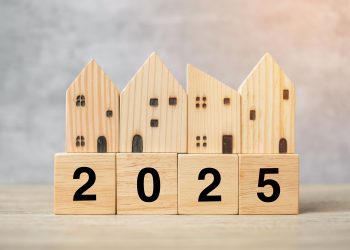 RISMEDIA, May 5, 2009-Pending home sales rose with many first-time buyers taking advantage of historically good housing affordability conditions, according to the National Association of Realtors®. The Pending Home Sales Index, a forward-looking indicator based on contracts signed in March, increased 3.2% to 84.6 from a level of 82.0 in February, and is 1.1% higher than March 2008 when it was 83.7. Lawrence Yun, NAR chief economist, said it should take a few months for the market to gain momentum. “This increase could be the leading edge of first-time buyers responding to very favorable affordability conditions and an $8,000 tax credit, which increases buying power even more in areas where special programs allow buyers to use it as a downpayment,” he said. “We need several months of sustained growth to demonstrate a recovery in housing, which is necessary for the overall economy to turn around.”
RISMEDIA, May 5, 2009-Pending home sales rose with many first-time buyers taking advantage of historically good housing affordability conditions, according to the National Association of Realtors®. The Pending Home Sales Index, a forward-looking indicator based on contracts signed in March, increased 3.2% to 84.6 from a level of 82.0 in February, and is 1.1% higher than March 2008 when it was 83.7. Lawrence Yun, NAR chief economist, said it should take a few months for the market to gain momentum. “This increase could be the leading edge of first-time buyers responding to very favorable affordability conditions and an $8,000 tax credit, which increases buying power even more in areas where special programs allow buyers to use it as a downpayment,” he said. “We need several months of sustained growth to demonstrate a recovery in housing, which is necessary for the overall economy to turn around.”
NAR’s Housing Affordability Index (HAI) remained near record highs. The affordability index was 166.7 in March – down from an upwardly revised record of 174.4 in February due to higher home prices in March. The index remains 30.8 percentage points higher than a year ago. The HAI is a broad measure of housing affordability using consistent values and assumptions over time, which examines the relationship between home prices, mortgage interest rates and family income; tracking began in 1970.
The Pending Home Sales Index in the South rose 8.5% to 93.2 in March and is 7.7% above a year ago. In the West the index increased 3.9% to 93.1 and is 1.7% higher than March 2008. The index in the Northeast fell 5.7% to 59.5 in March and is 24.1% below a year ago. In the Midwest the index slipped 1.0% to 82.3 but is 8.2% higher than March 2008.
NAR President Charles McMillan, a broker with Coldwell Banker Residential Brokerage in Dallas-Fort Worth, said the increase in buying power is quite remarkable. “Compared to a year ago, the typical family can pay much less in mortgage costs for the same home, or buy a better home without necessarily increasing their monthly payment,” he said. “For buyers who’ve been on the sidelines and have good jobs, the market has never looked more favorable. Homeownership has always offered immediate benefits and long-term value, but the advantages in today’s market are unique.”
A median-income family, earning $61,100, could afford a home costing $291,600 in March with a 20% downpayment, assuming 25% of gross income is devoted to mortgage principal and interest. Affordability conditions for first-time buyers with the same income and small downpayments are roughly 80% of that amount. The affordable price was notably higher than the median existing single-family home price in March, which was $174,900.
The National Association of Realtors®, “The Voice for Real Estate,” is America’s largest trade association, representing 1.2 million members involved in all aspects of the residential and commercial real estate industries.
The Pending Home Sales Index is a leading indicator for the housing sector, based on pending sales of existing homes. A sale is listed as pending when the contract has been signed but the transaction has not closed, though the sale usually is finalized within one or two months of signing. The index is based on a large national sample, typically representing about 20% of transactions for existing-home sales. In developing the model for the index, it was demonstrated that the level of monthly sales-contract activity from 2001 through 2004 parallels the level of closed existing-home sales in the following two months. There is a closer relationship between annual index changes (from the same month a year earlier) and year-ago changes in sales performance than with month-to-month comparisons.
For more information, visit www.realtor.org.










